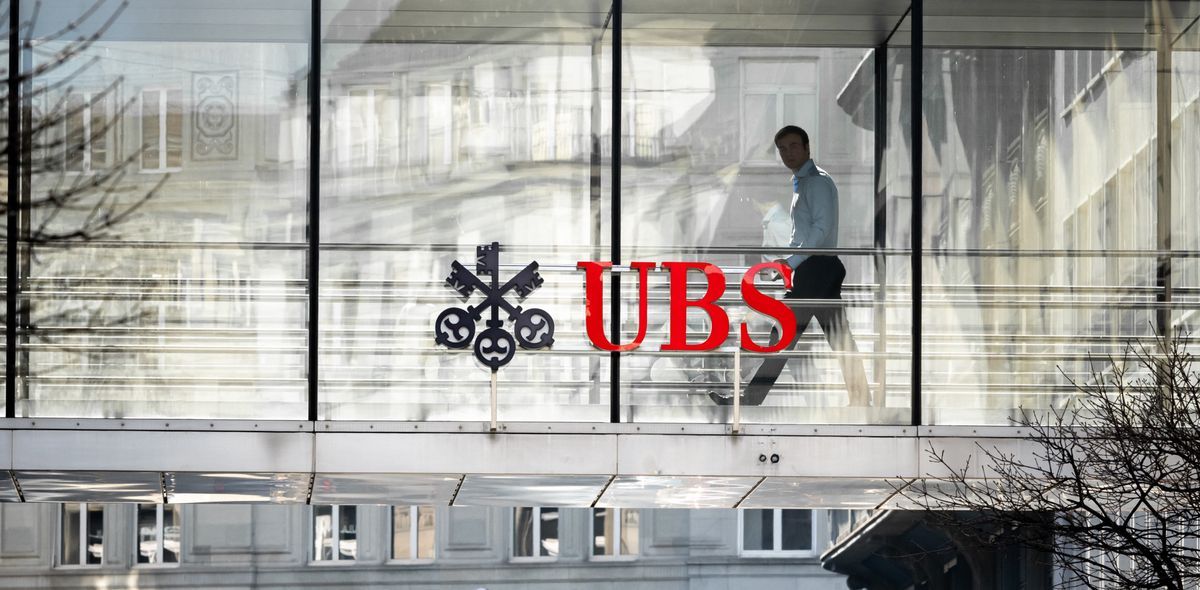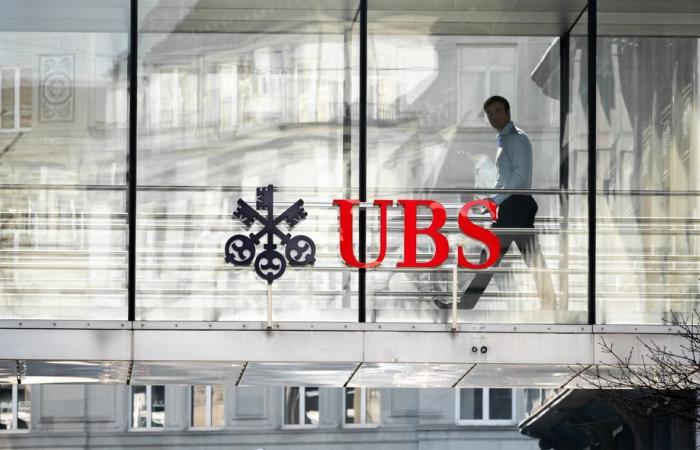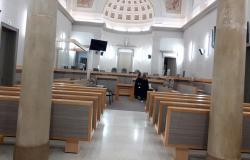ThoseLimitation of telework –UBS now closely monitors the presence of its employees
The largest bank in Switzerland wants to bring their employees back to the office. A new control tool arouses great internal concerns, especially in terms of remuneration.

Posted today at 5:06 p.m.

Each day counts in the office: an employee of UBS in Zurich.
Photo: Fabrice Coffrini (AFP)
Subscribe now and take advantage of the audio reading function.
- UBS now monitors the presence of its employees at the office thanks to a digital dashboard.
- Employees must prove their presence through a badge.
- The employees fear in the future repercussions on bonuses in the event of non-compliance with the rules of presence.
Since the end of the Covid epidemic, Large companies were more and more numerous to recall their employees in teleworking at the office. And The continuous trend. It’s UBS’s turn to strengthen Home Office rules Since last March in its various Globe offices. From now on, the rule is as follows: employees must be present at the office three days a week, including Monday or Friday.
Despite this new framework, UBS still limits home work than other large banks like JP Morgan and Goldman Sachs in the United States. The latter require a complete return to the office. The Deutsche Bank, on the other hand, has regulations similar to that of UBS.
Respect for the new rules is nevertheless closely monitored since April, through a new tool.
The presence at the office is scrupulously evaluated
According to the Testimony of several UBS employeesthis instrument is called the “dashboard”. It is a web portal that indicates at any time if they meet the conditions for their “flexible working agrement”. In other words, he informs collaborators if they have worked enough days at the office.
For each month since the start of the year, the staff see a value with their work quota at the office. If the employees are still at the office, the value displays 100%, which corresponds to 21 days in April. The presence is recorded by the access badge. The one who enters the building once made a office day.
A “buffer” is granted to all employees. This is a fixed deduction of 20%. A 100% working person is so required to be present only about 2.4 days per week on average and not at least three days. In April, this gives a value of 16.8 days. A dotted red line indicates to employees the target value to be achieved. Whoever leaves two weeks on vacation, for example, goes below the finish line and must then compensate for this delay in the year.
UBS wants to encourage “team collaboration and productivity”
The employee and his superior have access to data on the dashboard. The higher level employees see the statistics of the departments on an aggregate basis. “Spend enough time in the office with its colleagues, writes the bank, promotes innovation, collaboration and productivity of the team.”
-The Swiss Schindler elevator group and the industrial company Sulzer operated on a similar tour last fall, even opting for a stricter frame. Chez Schindlerhome work only exists on request. For many companies, however, there is no question of flipping. On the contrary. More and more job announcements in Switzerland promote the possibility of working at home.
The reduction in teleworking generates inconvenience and uncertainties
The objective of the new regulation seems to have been quickly achieved. An employee working at the Bank’s main headquarters in Zurich says that the people on his service are again more often found in the office. A situation that generates some inconveniences. Because, according to locals, it is often not easy to obtain a workplace, explains this other collaborator who prefers to keep anonymity. She often cannot reserve space in her own department, which, according to her, does not promote collaboration.
Others evoke collaborators who do not want to commute in the main building and prefer to work in their commune of residence, either in local buildings to improve their presence rate.
According to a spokesman for the bank, this situation is not a problem: “At UBS, we have enough quality workstations for our employees.”
Threat to remuneration?
But the new dashboard also generates uncertainties. Some employees are already worried about their bonus, if the new objectives are not achieved.
The bank wants to be reassuring: “Our approach is that of a fair and coherent remuneration, which guarantees that employees are properly remunerated for the services they provide.” According to her, the amount of variable remuneration depends on the respective result of the group, the result of the division, the market conditions as well as the individual performance of the employee and his behavior.
She also writes: “In addition to individual performance, behavior is also taken into account in the evaluation.”
What is certain is that we should expect important job cuts in Switzerland as soon as the Credit Suisse’s buyout is finalized. This will be the case in the course of next year. Two years ago, UBS announced 3000 layoffs. How many deleted positions do you have to date? Mystery. “In this context, uncertainty is great, recognizes another employee. And it will certainly not be reduced by these new measures. ”
“Latest news”Do you want to stay at the top of the info? “Tribune de Genève” offers you two meetings per day, directly in your e-mailbox. To not miss anything of what is happening in your canton, Switzerland or in the world.
Other newslettersConnect
Did you find an error? Please report it to us.
1 comment










